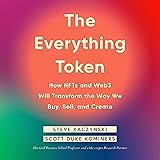How to Invest in Crypto as a Beginner: Your Complete Guide for 2025
Embarking on a journey to invest in crypto can feel overwhelming at first, yet it represents a significant opportunity for financial growth and independence. The accompanying video offers an excellent foundational overview, meticulously breaking down the complexities of the cryptocurrency world into understandable segments for new entrants. This detailed article further expands on these crucial concepts, providing additional context and practical steps for anyone looking to navigate the exciting realm of digital assets.
A structured approach to understanding this nascent financial ecosystem is absolutely essential for long-term success. Through this guide, beginners will be equipped with the knowledge needed to confidently begin their crypto investing journey, ensuring a safer and more informed experience. It is recognized that many individuals desire control over their financial future, and cryptocurrency provides a unique avenue for achieving this goal. This exploration will help demystify the process, offering clarity on everything from basic terminology to advanced investment strategies.
Understanding the Crypto Landscape for New Investors
At its very core, cryptocurrency is digital money that operates on a revolutionary technology called blockchain. Unlike traditional currencies controlled by central banks or governments, crypto utilizes a decentralized network of computers. This distributed ledger system records every transaction transparently and immutably, ensuring security and preventing fraud across the network.
The absence of a central authority is a defining characteristic, providing users with a degree of financial autonomy previously unimaginable. This fundamental shift from centralized control offers significant implications for global finance. Understanding this decentralized nature is paramount for anyone intending to invest in crypto as a beginner.
Why Consider Crypto Investing?
Numerous compelling reasons exist for individuals to consider allocating a portion of their portfolio to digital assets. Firstly, cryptocurrencies are inherently borderless; transactions can be executed instantaneously across international boundaries without the need for traditional banking intermediaries. This global accessibility facilitates unprecedented financial inclusion for populations previously underserved by conventional systems, highlighting the transformative potential of this technology.
Secondly, security is a cornerstone of blockchain technology, as transactions are verified and encrypted by a network of participants (miners or validators). This cryptographic security makes forging or tampering with transactions exceedingly difficult, offering a robust defense against malicious activities. Many cryptocurrencies, most notably Bitcoin, also feature a limited supply, designed to be deflationary over time. This scarcity is a key factor driving its appeal as a “digital gold,” a hedge against inflation and a store of value.
Lastly, certain cryptocurrencies, such as Ethereum, are programmable, allowing developers to build sophisticated applications, known as smart contracts. These self-executing contracts automate agreements without intermediaries, enabling the creation of entire decentralized financial (DeFi) ecosystems. The integration of programmability extends crypto’s utility far beyond simple currency, positioning it as a foundational layer for the next generation of the internet, often referred to as Web3.
Essential Crypto Terminology for Beginners
The world of cryptocurrency is often perceived as intimidating due to its specialized lexicon. However, grasping these core terms is crucial for anyone looking to invest in crypto effectively. A clear understanding of this vocabulary will undoubtedly empower new investors to navigate the market with greater confidence and make informed decisions regarding their digital assets.
- Bitcoin (BTC): This is recognized as the original cryptocurrency, often viewed as “digital gold” due to its limited supply and status as a store of value. It is the largest cryptocurrency by market capitalization.
- Altcoins: This term broadly refers to any cryptocurrency other than Bitcoin. Altcoins aim to offer different features, functionalities, or improvements over Bitcoin.
- DeFi (Decentralized Finance): Representing a new paradigm, DeFi provides financial services like lending, borrowing, and earning interest without traditional banks or intermediaries. Smart contracts facilitate these complex operations.
- Layer 1 (L1): These are base blockchains, forming the fundamental infrastructure of a cryptocurrency network. Examples include Bitcoin, Ethereum, and Solana, providing the core security and settlement layers.
- Layer 2 (L2): Built on top of Layer 1 blockchains, Layer 2 solutions aim to enhance scalability and efficiency. Projects like Polygon and Arbitrum process transactions off-chain, thereby reducing gas fees and speeding up processing times on the underlying Layer 1.
- Meme Coins: These cryptocurrencies originate from internet memes or jokes, often gaining value through community hype rather than fundamental utility. Dogecoin and Pepe Coin are notable examples, characterized by high volatility.
- Stablecoins: Designed to minimize price volatility, stablecoins are cryptocurrencies pegged to real-world assets, typically the US dollar. USDT and USDC are widely used to “park” profits and avoid market fluctuations.
- Hot Wallet: A digital wallet connected to the internet, often in the form of an app or browser extension. MetaMask (for Ethereum) and Phantom Wallet (for Solana) offer convenient access but are generally less secure than cold wallets due to their online nature.
- Cold Wallet: An offline hardware device, such as Ledger or Trezor, used for storing cryptocurrency. These provide the highest level of security for digital assets as they are not continuously connected to the internet.
- Wallet Address: This is a public string of alphanumeric characters, akin to an email address or bank account number, used to receive cryptocurrency. It can be safely shared with others for transactions.
- Private Key: A secret, cryptographic code that grants complete control over the funds within a wallet. This key must be kept absolutely confidential; its compromise means losing all associated crypto, as there are no recovery mechanisms.
- Seed Phrase (Recovery Phrase): A list of 12 to 24 words that serves as a master backup for a crypto wallet. This phrase allows for the restoration of a wallet if the device is lost or damaged and must be stored securely offline.
- CEX (Centralized Exchange): A platform like Coinbase, Binance, or Kraken where users can buy, sell, and trade cryptocurrencies using traditional fiat money. These exchanges act as intermediaries, holding users’ funds in custody.
- DEX (Decentralized Exchange): Platforms like Uniswap facilitate peer-to-peer crypto trading without the need for an intermediary or sign-up process. Users connect their wallets directly, maintaining full control of their funds.
- Gas Fees: These are transaction fees paid to the network to process and validate transactions, especially prevalent on the Ethereum blockchain. Fees fluctuate based on network congestion.
- Market Cap (Market Capitalization): Calculated as the current price of a cryptocurrency multiplied by its circulating supply, market cap indicates the total value of a crypto asset. It is a key metric for evaluating a coin’s size and stability.
- HODL: An acronym for “Hold On for Dear Life,” this term signifies a strategy of holding onto cryptocurrencies for the long term, resisting the urge to sell during market downturns.
- FOMO (Fear Of Missing Out): This describes the emotional state of investors who buy into assets due to rapidly rising prices, often leading to impulsive decisions.
- FUD (Fear, Uncertainty, and Doubt): Refers to the spread of negative information or rumors that can cause panic selling among investors.
- DCA (Dollar-Cost Averaging): An investment strategy involving regular, fixed investments into an asset, regardless of its price. This method helps mitigate risk by averaging out the purchase price over time.
The Practical Steps to Buying and Selling Crypto
For beginners, the most straightforward path to acquiring cryptocurrency involves using a centralized exchange (CEX). These platforms simplify the process of converting traditional fiat currency into digital assets. Choosing a reputable exchange is a critical first step for anyone intending to invest in crypto for the first time.
Getting Started with a Centralized Exchange (CEX)
The initial requirement involves signing up for an account on a well-established CEX such as Coinbase, Kraken, or Binance. These platforms are widely recognized for their user-friendliness and robust security measures. During the registration process, identity verification is mandated, which typically includes providing a valid government-issued ID and sometimes proof of address. This Know Your Customer (KYC) procedure is essential for regulatory compliance and helps prevent illicit financial activities.
Verification times can vary, ranging from a few minutes to several days, depending on jurisdictional requirements and the volume of new registrations. Patience is advised during this crucial verification period. Once identity is confirmed, the next step involves securely linking a payment method to your exchange account. Common options include connecting a bank account, a debit card, or initiating a wire transfer. Each method may have different fees and processing times, which should be reviewed before proceeding.
Connecting Payment Methods and Making Your First Purchase
After successfully linking your preferred payment method, you are ready to make your first cryptocurrency purchase. The exchange interface will typically allow you to search for the specific cryptocurrency you wish to buy, such as Bitcoin (BTC) or Ethereum (ETH). You will then enter the desired amount in your local currency, and the system will display the equivalent cryptocurrency amount you will receive, including any associated fees.
Upon confirming the transaction, your purchased crypto will be deposited into your exchange wallet. At this juncture, a critical decision must be made regarding the storage of your newly acquired assets. While leaving funds on the exchange is convenient, it is generally not recommended for long-term holdings due to increased security risks. The safest practice for substantial investments is transferring them to a personal, self-custody wallet.
Securing Your Investments: Wallet Options
For enhanced security, transferring your crypto from the exchange to a personal wallet is strongly advised. Two primary types of self-custody wallets are available: hot wallets and cold wallets. Hot wallets, such as MetaMask for Ethereum or Phantom Wallet for Solana, are internet-connected applications or browser extensions. They offer ease of access for interacting with decentralized applications (DApps) but carry a higher risk profile due to their online nature.
Cold wallets, exemplified by hardware devices like Ledger or Trezor, are offline and provide the highest level of security. These devices store your private keys in an isolated environment, making them impervious to online threats. For significant holdings or long-term investment strategies, the use of a cold wallet is considered an industry best practice. When transferring funds, extreme care must be taken to ensure the correct wallet address is used and that the cryptocurrency being sent is compatible with the receiving wallet. Sending an incompatible asset to an incorrect address can result in irreversible loss of funds.
Transferring Crypto to a Hot Wallet for DApp Interaction
Should your objective include interacting with decentralized applications or purchasing specific altcoins, particularly meme coins on a Layer 1 blockchain like Solana, a hot wallet becomes indispensable. The process begins by acquiring the base currency, such as Solana (SOL), on your chosen centralized exchange. Subsequently, you initiate a “send crypto” command from the CEX, directing the SOL to your Phantom Wallet address, which is specifically designed for Solana-based assets.
Upon the Solana tokens arriving in your Phantom Wallet, you can then utilize decentralized exchanges (DEXs) integrated within the wallet to swap SOL for various Solana-based meme coins. For these swaps, obtaining the precise contract address of the desired meme coin is crucial; this information is typically found on the project’s official website or listed on analytics platforms like Dex Screener. This multi-step process enables access to a broader spectrum of digital assets and opportunities within the decentralized ecosystem, underscoring the dynamic nature of crypto investing.
Cashing Out: Off-Ramping Your Profits
When the time comes to realize profits or convert cryptocurrency back into fiat currency, the process is referred to as “off-ramping.” If profits were generated from, for instance, a meme coin held in a hot wallet, the first step involves swapping that asset back into a more liquid cryptocurrency, often a stablecoin like USDC, or the base currency like Solana. These funds are then sent back to your centralized exchange account.
From the CEX, you can initiate a withdrawal to your linked bank account. This final step completes the conversion of digital assets back into traditional money. A common strategy among experienced investors involves minimizing the amount of crypto held on exchanges, with the majority of long-term holdings being secured in cold storage. This approach significantly reduces exposure to potential exchange hacks or other security vulnerabilities, protecting substantial capital.
Navigating Crypto Investment Strategies and Market Cycles
Developing a clear investment strategy is paramount for navigating the volatile cryptocurrency markets successfully. Different approaches cater to various risk tolerances and time horizons. Understanding these strategies, coupled with an awareness of market cycles, empowers individuals to make informed decisions as they invest in crypto.
Common Investment Approaches
The simplest approach for beginners is spot trading, where actual crypto assets are purchased and held. This method involves no borrowed funds or leverage, making it less risky than other strategies. During market downturns, many investors engage in dollar-cost averaging (DCA) by adding to their spot positions in high-conviction assets. Day trading involves buying and selling cryptocurrencies within the same day or even hours, aiming to profit from small price fluctuations. This highly demanding strategy requires significant market knowledge and risk management and is generally not recommended for beginners due to its inherent volatility and complexity.
Swing trading is a medium-term strategy where assets are held for days, weeks, or even months to capture larger price trends. It balances the quick gains of day trading with the longer-term perspective of spot holding. The most advanced and riskiest strategy is leverage trading, which involves borrowing funds to amplify trading positions. For example, using 10x leverage on a $100 investment means trading with $1,000. While this can lead to substantial profits, it also dramatically increases the potential for significant losses, potentially wiping out an entire investment. It is crucial for beginners to identify an investment style that aligns with their personal financial goals and risk tolerance, focusing on mastering one or two strategies before venturing into more complex ones.
Understanding Crypto Market Cycles
The cryptocurrency market operates in distinct cycles, influenced by both fundamental and technical factors. These cycles do not follow a linear path; rather, they involve periods of growth, consolidation, and correction. Recognizing these patterns is a vital skill for anyone committed to long-term success in this space.
Macro cycles represent the overarching, long-term trends, typically spanning several years. A significant driver of these cycles is the Bitcoin halving event, which occurs approximately every four years. This event reduces the rate at which new Bitcoin enters circulation, often leading to a supply shock and subsequent price appreciation. Following a halving, a common pattern unfolds: Bitcoin’s price climbs, often followed by a period where altcoins experience explosive growth—known as “alt season.” This phase is then succeeded by a bear market, characterized by price corrections and a slow recovery, before the cycle reiterates itself.
For instance, historical data has shown that alt seasons often gain momentum in the quarters following a Bitcoin halving, with analysts often projecting the next significant alt season for Q4 of 2025 based on current market patterns. Understanding these flows of capital between Bitcoin and altcoins within the macro cycle is crucial for strategic entry and exit points. In contrast, micro cycles are shorter-term fluctuations within the larger macro trend, such as brief hype cycles around specific sectors like meme coins, AI tokens, or DeFi projects. While these can offer quick gains, they are generally more speculative and riskier for beginner investors. Focusing on the broader macro cycles and adopting a long-term holding strategy for quality projects is often a more prudent approach for new market participants.
Securing Your Digital Assets and Planning for the Future
Prioritizing security is non-negotiable for anyone involved in crypto investing. The decentralized nature of cryptocurrencies places full responsibility for asset security squarely on the individual investor. Implementing robust security measures is paramount to protecting one’s wealth in this rapidly evolving digital landscape.
Prioritizing Security Measures
The distinction between hot and cold wallets cannot be overstated in terms of security. While hot wallets offer convenience for active trading and DApp interaction, they are inherently more vulnerable to cyber threats due to their internet connectivity. For the vast majority of one’s crypto holdings, particularly long-term investments, cold storage solutions like hardware wallets (e.g., Ledger, Trezor) are unequivocally superior. These devices keep private keys offline, significantly mitigating the risk of hacking or unauthorized access. Regularly reviewing and updating security practices, including the use of strong, unique passwords and two-factor authentication on exchanges, also contributes significantly to overall asset protection.
Furthermore, the extreme importance of safeguarding your private key and seed phrase must be permanently ingrained. These are the absolute master keys to your digital wealth; if compromised, funds can be irretrievably lost, as no central authority exists to reverse transactions or restore access. It is strongly recommended that seed phrases be written down on paper and stored in multiple secure, offline locations, away from potential fire, water, or theft. Diligence in these practices forms the bedrock of secure crypto investing.
Developing a Resilient Investor Mindset
Beyond technical understanding, success in crypto investing demands a specific mindset characterized by patience, continuous learning, and emotional discipline. The cryptocurrency market is renowned for its volatility, with significant price swings being a common occurrence. Beginners must cultivate the ability to “HODL” through these fluctuations, resisting the urge to panic sell during downturns or succumb to FOMO during rapid price surges. A well-defined investment strategy, coupled with clear profit targets and stop-loss levels, can help automate decision-making and reduce emotional trading.
Ongoing education about blockchain technology, emerging projects, and market dynamics is also critical. The space evolves at an incredible pace, and staying informed allows investors to adapt and identify new opportunities. Regularly re-evaluating one’s portfolio and strategy in light of new information is a sign of a mature investor. Embracing the journey of learning and personal growth is an often-overlooked aspect that separates successful long-term investors from those who falter.
The Transformative Potential of Crypto
Ultimately, investing in crypto is more than just an opportunity to build wealth; it represents participation in a financial revolution. This technology is fundamentally reshaping how value is transferred, stored, and owned globally. By taking the time to understand the fundamentals, building a sound strategy, and prioritizing security, beginners can position themselves to be part of one of the most significant economic shifts of our lifetime. The potential for financial freedom and control offered by decentralized finance is unparalleled, attracting a growing number of individuals seeking alternatives to traditional systems. As the market matures, those who have committed to learning and strategically engaging with this space are expected to be the beneficiaries of its transformative power, ensuring that they effectively invest in crypto for their future.







